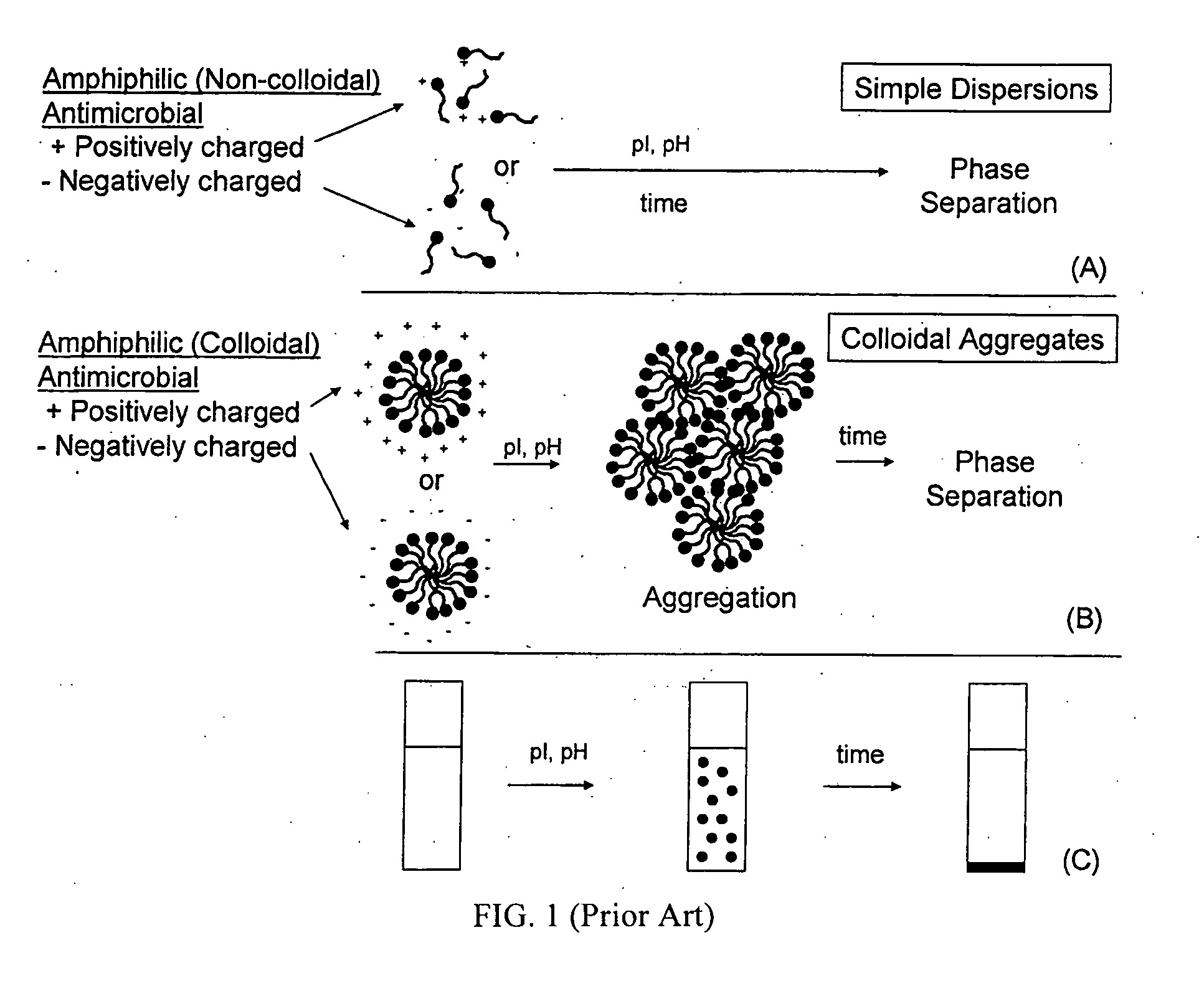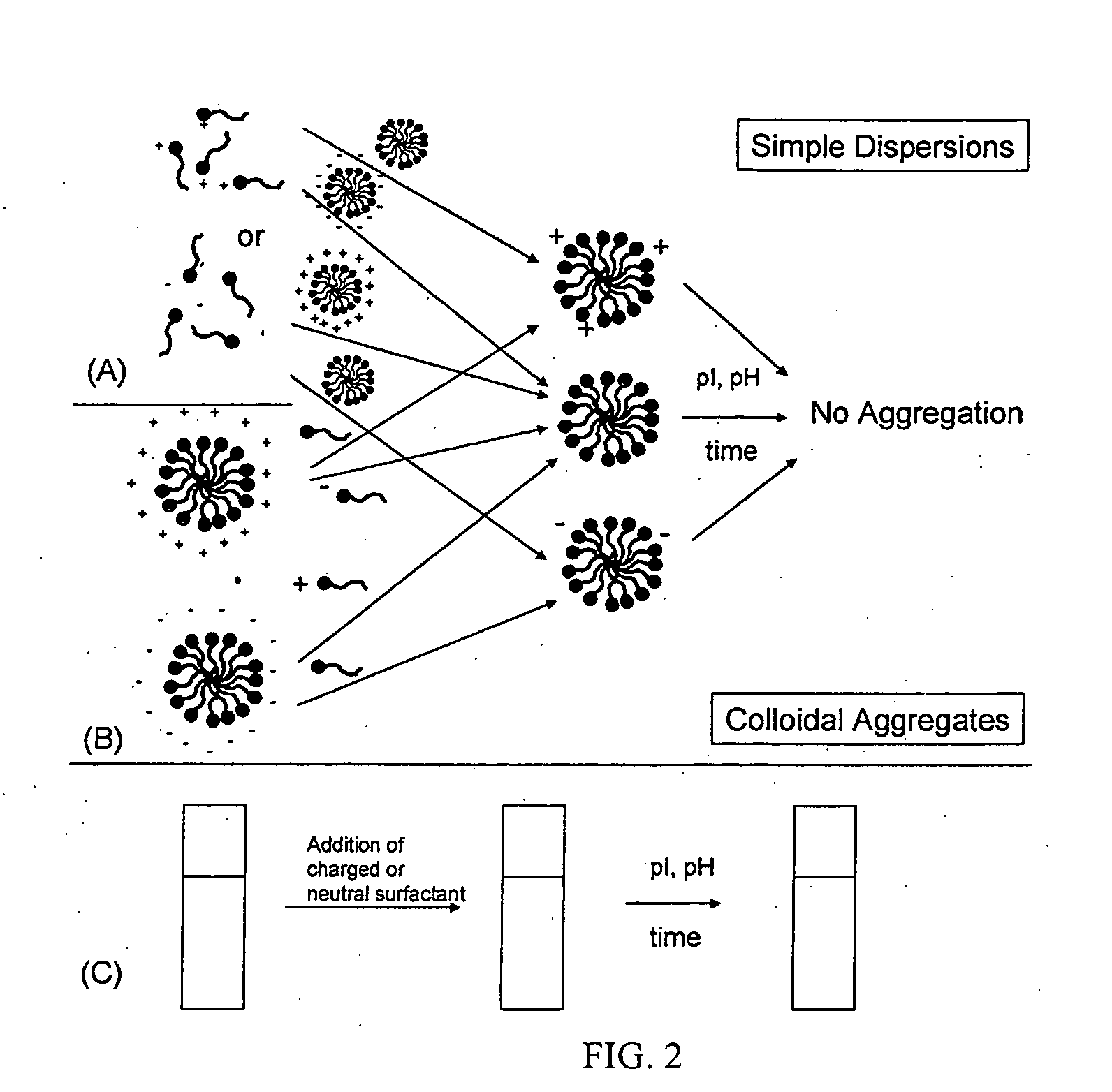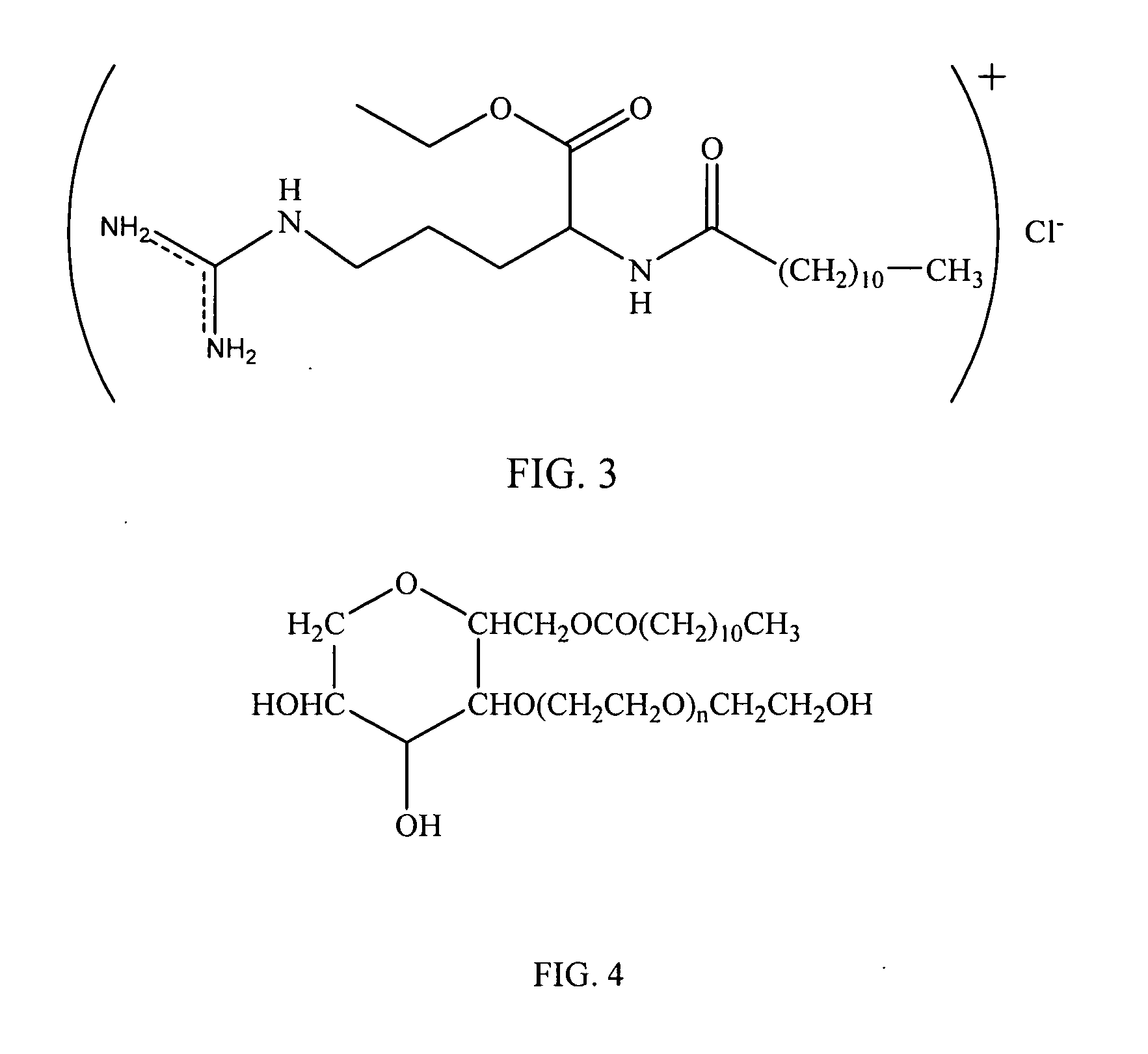Stabilized antimicrobial compositions and related methods of preparation
a technology of antimicrobial compositions and compositions, applied in the field of stabilized antimicrobial compositions, can solve the problems of low efficacy loss of activity, and low use of antimicrobials and antibiotics, and achieve the effect of increasing the use of antimicrobials
- Summary
- Abstract
- Description
- Claims
- Application Information
AI Technical Summary
Benefits of technology
Problems solved by technology
Method used
Image
Examples
example 1a
[0065] As an example of the behavior encountered in the art, consider the lauric arginates. Addition of simple salts such as NaCl can lead to a reduction of the positive charge of the compound, which results in aggregation and phase separation and loss of antimicrobial activity. The lauric arginate solution that was initially transparent becomes turbid upon addition of the salt. Finally, as the large flocs sediment (move to the bottom), a highly turbid sediment phase and a clear supernatant phase can be observed.
example 1b
[0066] Demonstrating use of this invention, a clear solution of lauric arginate in deionized water can be prepared. Upon addition of HCl and NaOH, the dispersion becomes turbid indicating formation of large aggregates. Eventually these aggregates phase separate (not shown). Addition of a sufficient concentration of a nonionic surfactant, in this case polyoxyethylene (20) sorbitan monolaureate, restored stability of the dispersion leading to a transparent appearance.
example 2
[0067] As discussed above, various organic acids and their derivatives can provide antimicrobial activity. Representative of such components, consider benzoic acid. An increase in pH above the pKa can lead to proton dissociation, giving the compound a negative charge and resulting in loss of antimicrobial activity. The critical pH is typically around 4. As a further example of this invention, a composition comprising benzoic acid and polyoxyethylene (20) sorbitan monolaureate provides mixed micelle formation with overall reduced net charge. Such a system demonstrates, as compared to benzoic acid alone, improved interaction with microbial surfaces. As a result, higher antimicrobial activities are obtained, even at elevated pH.
[0068] With references to examples 3-6:
[0069] Materials and Solution Preparation. Concentrated Mirenat®-N solution (25% lauric arginate, 75% PEG) was obtained from A&B Ingredients and used without further purification. Polyoxyethylene 20 sorbitan monolaureate ...
PUM
 Login to View More
Login to View More Abstract
Description
Claims
Application Information
 Login to View More
Login to View More - R&D
- Intellectual Property
- Life Sciences
- Materials
- Tech Scout
- Unparalleled Data Quality
- Higher Quality Content
- 60% Fewer Hallucinations
Browse by: Latest US Patents, China's latest patents, Technical Efficacy Thesaurus, Application Domain, Technology Topic, Popular Technical Reports.
© 2025 PatSnap. All rights reserved.Legal|Privacy policy|Modern Slavery Act Transparency Statement|Sitemap|About US| Contact US: help@patsnap.com



